Psoriasis on Tops of Feet: Comprehensive Summary and Analysis
What is psoriasis on the tops of feet? How does it affect the feet and nails? What are the triggers and treatment options for this condition? Find comprehensive answers in this informative article.
Anatomy and Importance of the Feet
The feet are an essential part of the human anatomy, comprising 26 bones, 33 joints, and a complex network of muscles, tendons, and ligaments. The skin on the soles of the feet is unique, with a high concentration of sweat pores, and the thickest layers of skin on the human body to cope with the constant weight bearing. The feet are highly sensitive and act as sensors when walking or standing, making any interference or condition affecting the feet profoundly impact overall function and well-being.
Types of Psoriasis Affecting the Feet
Psoriasis on the feet, known as palmoplantar psoriasis, typically presents as thick, scaly plaques that can be painful and prone to cracking and bleeding. There are also other specific types of psoriasis that can affect the feet:
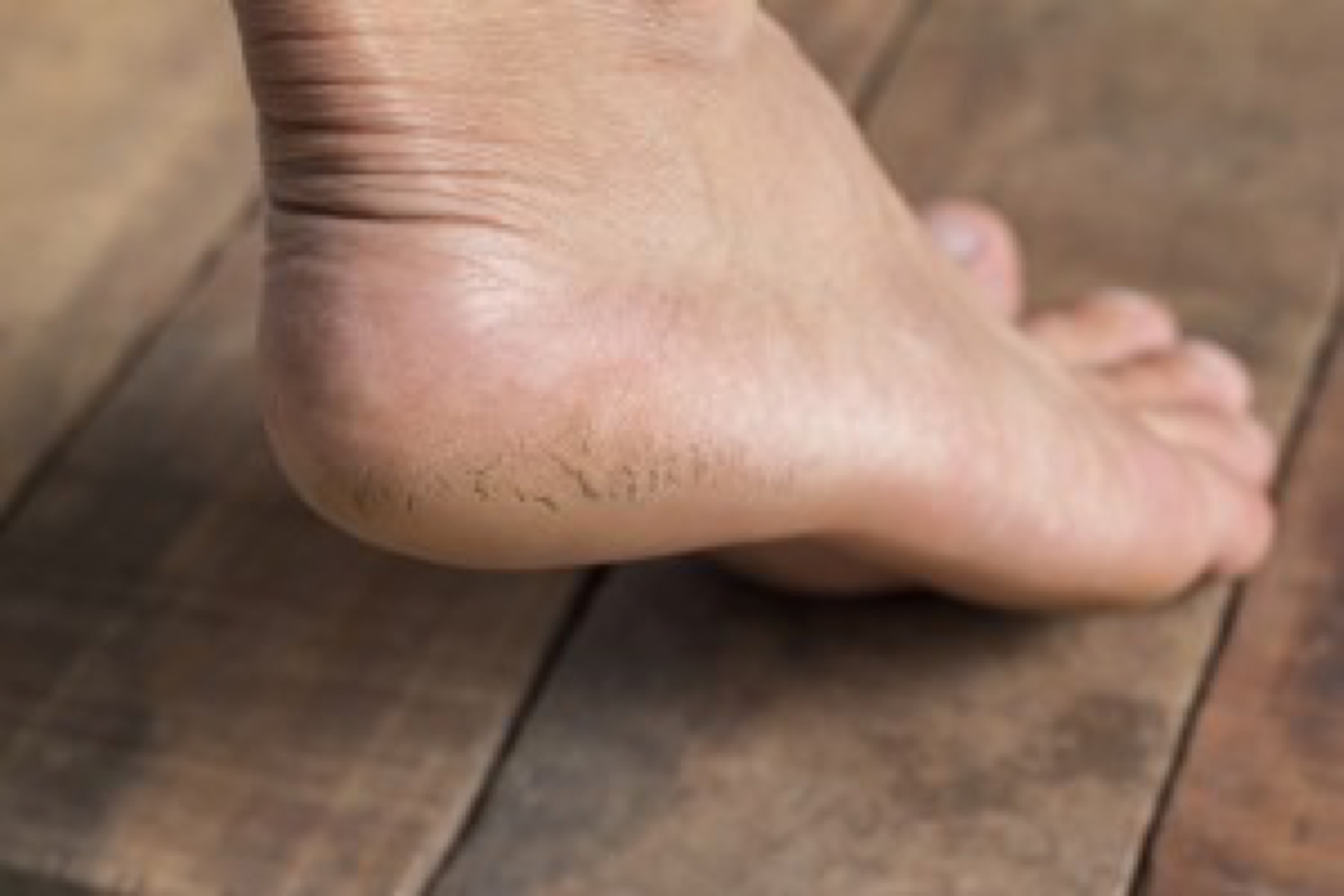
Localised Pustular Psoriasis (Palmoplantar Pustular Psoriasis)
This type affects about 5% of people with psoriasis, commonly occurring between the ages of 20 and 60, and is more common in women. It is characterized by the appearance of sterile, yellow/white pustules on the palms and soles, which can be painful and often have a cyclical pattern of recurrence.
Acrodermatitis Continua of Hallopeau
This is a rare form of localized pustular psoriasis that affects the tips of the fingers and, less commonly, the toes. It is usually triggered by some form of skin trauma and can be painful, frequently affecting the nails and potentially leading to nail loss. It is difficult to treat and may require systemic medications.
Nail Involvement in Psoriasis
Psoriasis can also affect the nails, with involvement of the nail plate causing pitting, ridging, thickening, lifting, and discoloration. This is due to abnormalities in the growth of tissue in the nail bed. Treatments for nail psoriasis typically target the nail bed or the nail folds, but can be challenging as the nail, once grown, can only be altered by filing or clipping.

Triggers of Psoriasis
The exact cause of psoriasis is not fully understood, but it is an inherited inflammatory disease that can be triggered by various events, illnesses, or injuries to the skin. A phenomenon known as Koebner’s phenomenon or Koebnerization can occur, where a psoriatic lesion develops in an area of traumatized skin that had not previously been affected by the condition.
Diagnosis and Seeking Medical Attention
If you suspect you may have psoriasis on your feet, it is recommended to seek a proper diagnosis. Visiting your general practitioner or a pharmacist is a good starting point, and you may also consider consulting a chiropodist (podiatrist), especially if your nails have become thickened and difficult to manage. A simple examination is often sufficient to diagnose psoriasis on the feet, but in some cases, further investigation may be necessary.
Treatment Options
The treatment of psoriasis on the feet, including the different types that can affect this area, typically involves a combination of topical, systemic, and sometimes biologic therapies. The specific treatment approach will depend on the severity of the condition, the presence of nail involvement, and the individual’s response to different treatments. It is important to work closely with healthcare professionals to develop a personalized treatment plan that can effectively manage the symptoms and improve the overall quality of life for those living with psoriasis on the feet.
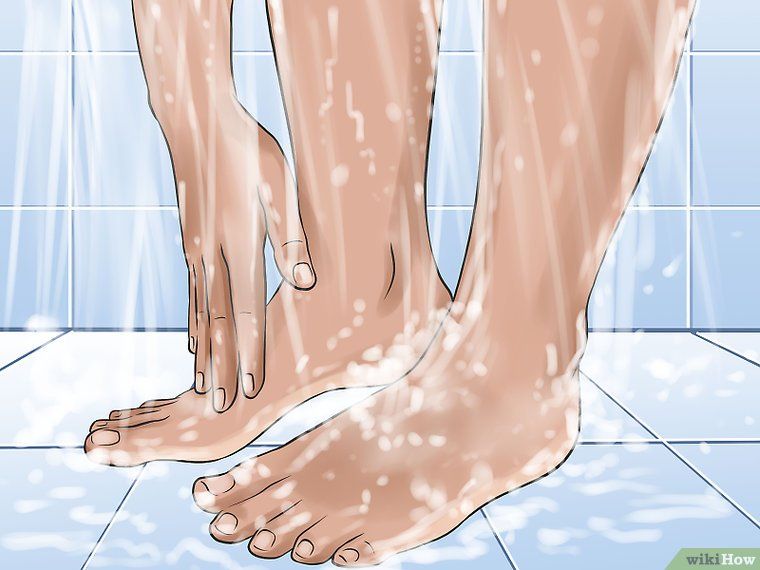
Conclusion
Psoriasis on the feet, including the specific types of palmoplantar psoriasis and acrodermatitis continua of Hallopeau, can have a significant impact on an individual’s daily activities and overall well-being. Understanding the unique anatomy and sensitivity of the feet, as well as the various manifestations of psoriasis in this area, is crucial for proper diagnosis and effective management of this chronic condition. By seeking timely medical attention and working closely with healthcare professionals, individuals with psoriasis on the feet can explore appropriate treatment options and find relief from the associated symptoms.
Psoriasis and psoriatic arthritis on the feet
About the foot
The feet are an important part of the human anatomy; each foot has 26 bones, 33 joints and is controlled by muscles, tendons, and ligaments. The skin on the sole of the foot is different to that on the rest of the body, with a particularly large number of sweat pores.
To cope with the weight that is continually placed on them, the soles of the feet have the thickest layers of skin on the human body. They are, however, very sensitive and act as sensors when walking or standing. Therefore, anything that interferes or affects the feet can have a profound impact on function and general wellbeing.
Psoriasis on the foot
Most commonly, psoriasis on the foot looks similar to plaque psoriasis in other locations on the body and is called palmoplantar psoriasis. Often the plaques are thick and scaly, which can be painful and bleed if cracks appear. It is important to distinguish psoriasis from other conditions that affect the foot.
Apart from plaque, there are other types of psoriasis which affect the foot and have a different appearance.
Localised pustular psoriasis – also known as palmoplantar pustular psoriasis (PPP) – affects about
Localised pustular psoriasis also known as palmoplantar pustular psoriasis (PPP) – affects about 5% of people with psoriasis. It occurs most commonly between the ages of 20 and 60. It can be painful and is more common in women than men. About 10-25% of people with PPP have a family history of psoriasis but the precise reason why some people develop it is not known.
PPP causes pustules on the palms and soles. As in all types of psoriasis, infection and stress are suspected trigger factors. PPP is normally recognisable by yellow/ white pustules approximately 2-3mm in diameter, appearing on fleshy areas of hands and feet, such as the base of the thumb and the sides of the heels.
These pustules are sterile, which means they are not the result of infection. Antibiotics do not affect them. After time, the pustules dry up and resolve, leaving brown stains on the skin surface. The natural history of the disease is usually cyclical (occurring often or repeatedly), with the appearance of new crops of pustules followed by periods of low activity in which the pustules resolve. See Pustular psoriasis.
Acrodermatitis continua of Hallopeau is a very rare form of localised pustular psoriasis. This looks similar to palmoplantar pustular psoriasis, but is localised to the ends of the fingers and, less commonly still, the toes (acropustulosis). It usually starts after some trauma to the skin. It tends to be painful and frequently affects the nails. It may lead to loss of the nails. Bone changes can be seen in severe cases. It is difficult to treat and many therapies have been tried. Topical treatments are usually not very successful but occasionally systemic medications may help to clear the lesions and restore the nails.
Nail involvement
Given they are part of the skin, it is perhaps not surprising that nails can be affected by a skin disease such as psoriasis. Nail psoriasis is very common, yet no one knows why some people get nail involvement and others do not. Nails grow from the nail plate, which is just under the cuticle. In people who develop psoriasis of the nails, it is involvement of the nail plate that causes pitting, ridging, thickening, lifting and discolouration of the nail due to abnormalities in the growth of tissue in the nail bed.
The nail is made of modified skin and, once it has grown, it can only be altered by filing or clipping. Treatments are usually directed at the nail bed or the nail folds that tuck around the edges. Treated inflammation in these tissues can result in better nail growth with fewer features of psoriasis, but treatment of nail psoriasis can be difficult. See Nail psoriasis
Triggers of psoriasis
It is not fully understood what causes psoriasis, but it is an inherited inflammatory disease. It can be triggered by events, illness or injury to the skin. A particular process known as Koebner’s phenomenonor Koebnerisation is named after the German dermatologist Heinrich Koebner. Koebner found that people with psoriasis whose skin became traumatised following an injury, often developed a psoriatic lesion in the area, but where psoriasis had not previously been seen; such sites include cuts, bruises, burns, bumps, vaccinations, tattoos and other skin conditions.
It can be triggered by events, illness or injury to the skin. A particular process known as Koebner’s phenomenonor Koebnerisation is named after the German dermatologist Heinrich Koebner. Koebner found that people with psoriasis whose skin became traumatised following an injury, often developed a psoriatic lesion in the area, but where psoriasis had not previously been seen; such sites include cuts, bruises, burns, bumps, vaccinations, tattoos and other skin conditions.
Diagnosis
If you think you may have psoriasis on your foot or feet, it is best to get a diagnosis. Visiting your GP or asking your pharmacist is a good place to start. Alternatively, you may wish to see a local chiropodist (sometimes known as a podiatrist), particularly if your nails have become thickened and difficult to manage.
Psoriasis on a foot or both feet may be diagnosed by simple examination, but if there is any doubt then referral to a specialist (dermatologist) may be required. It is unlikely that any specific test will be performed unless there is a suspicion of a fungal infection, when some samples may be taken for laboratory analysis.
It is unlikely that any specific test will be performed unless there is a suspicion of a fungal infection, when some samples may be taken for laboratory analysis.
Treatments
For plaque psoriasis on the foot, treatment will generally be similar to those recommended for other areas of the body, with the use of topical (applied to the skin) creams, ointment and gels. See Treatments for psoriasis.
The use of phototherapy (ultraviolet light) may be considered, but availability and access to appropriate centres can sometimes be limited. It may be possible to treat psoriasis affecting the hands and feet with localised phototherapy. See Psoriasis and phototherapy.
Palmoplantar pustular psoriasis is often difficult to treat, although some people do benefit from potent topical steroids combined with tar preparations. However, in most cases treatment with acitretin (a vitamin A derivative) tablets is the most effective.
Treating nails can be problematic, as once the nail changes appear the damage has already occurred. It is important to check that other conditions that affect the nail, such as fungal infection, are not present, as these can often look similar to nail psoriasis. It is advisable to keep nails short and clean. See our leaflet Nail Psoriasis. See Nail psoriasis.
It is important to check that other conditions that affect the nail, such as fungal infection, are not present, as these can often look similar to nail psoriasis. It is advisable to keep nails short and clean. See our leaflet Nail Psoriasis. See Nail psoriasis.
Psoriatic arthritis in the foot
The ankle is a hinge joint between the talus bone of the foot and the two bones of the lower leg, the tibia and fibula. The ankle joint lets you move your foot up and down. Other movements, such as tilting and rotation, occur at other joints in the foot itself. Each foot contains 26 bones which form joints where they meet. These joints are all lined with a synovial membrane that produces lubricating oil. Many tendons pass around the ankle to connect the bones with the muscles that move them. These are also covered in synovial membrane and oiled with synovial fluid. In psoriatic arthritis, any part of the foot can be affected and become inflamed and painful, which in turn may lead to permanent disability.
What happens?
The synovial membranes that line joints, tendons and connective tissue become thickened and inflamed (tendonitis and enthesitis). This releases more fluid than normal so the joints and tendons become tender and swollen, which may result in:
- pain
- tenderness
- swelling
- stiffness
- difficulty walking
- deformity (such as sausage-shaped toes)
- decreased range of movement
- locked joints
- joints feeling hot.
The pattern of joints that may be involved can vary from person to person, and may just affect a small number of joints (oligoarthritis) or many joints (polyarthritis). Most commonly, psoriatic arthritis is asymmetric in pattern (not identical on both sides) unlike rheumatoid arthritis, which is symmetrical.
In terms of symptoms, psoriatic arthritis can cause stiffness in the joints, particularly after a period of inactivity such as after waking up in the morning. Psoriatic arthritis can also cause swelling of an individual toe so it looks like a sausage, called dactylitis. Some people also experience heel pain because the Achilles tendon, which connects the calf muscles to the heel bone, has become inflamed. Swelling around the ankle is common in psoriatic arthritis affecting the foot.
Psoriatic arthritis can also cause swelling of an individual toe so it looks like a sausage, called dactylitis. Some people also experience heel pain because the Achilles tendon, which connects the calf muscles to the heel bone, has become inflamed. Swelling around the ankle is common in psoriatic arthritis affecting the foot.
Psoriatic arthritis can lead to shortening or clawing of the toes, hyperextension of the big toe and some in-rolling of the ankle with flattening of the metatarsal arch. Stiffness of the joints, rather than instability, also happens quickly and can become irreversible within a few months. The occurrence of calluses and ulcers on the soles of the foot is less common than in rheumatoid arthritis (RA) but corns over the interphalangeal joints can be very painful.
Symptoms tend to flare up and then die down again. If the inflammation is persistent and left untreated, toe joints can fuse together, with the space between the individual joints being lost.
You should always seek medical advice if you experience stiffness in your joints especially after inactivity, severe pain, redness or swelling in one or both feet, whether this is mild or severe. It is essential to minimise the inflammation to avoid permanent joint deformity.
It is essential to minimise the inflammation to avoid permanent joint deformity.
Causes and triggers
As with skin psoriasis, the cause of psoriatic arthritis is unknown, with an event or illness often considered a trigger. There is also a theory (hypothesis) of a ‘deep Koebner phenomenon’ which might initiate psoriatic arthritis, although this is yet to be proven.
Getting a diagnosis of psoriatic arthritis The presence of psoriasis may provide an indication of psoriatic arthritis when someone develops joint symptoms. Psoriatic arthritis can develop in people with a lot or a little of psoriasis, and may be more common in people with nail psoriasis. As well as joint symptoms, psoriatic arthritis can lead to feeling tired. Many people become frustrated by a lack of diagnosis; psoriatic arthritis tends to have periods of improvement and worsening, which may also be attributed to mechanical joint problems and not inflammatory arthritis.
If you have the symptoms of inflammatory arthritis, such as psoriatic arthritis, your doctor will often refer you to a rheumatologist.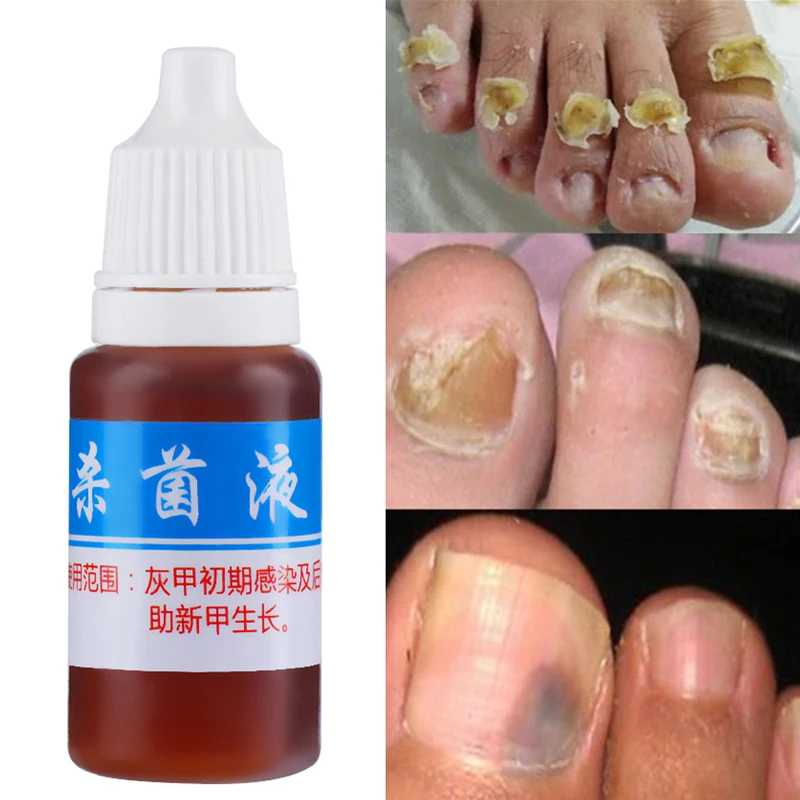 In some cases, further tests (blood) and imagery (X-ray, ultrasound, MRI) may be sought, although this will depend on the individual circumstances and level of confidence in the initial diagnosis.
In some cases, further tests (blood) and imagery (X-ray, ultrasound, MRI) may be sought, although this will depend on the individual circumstances and level of confidence in the initial diagnosis.
Treatment
In most instances, specific treatment to the foot is necessary to some degree. Treating psoriatic arthritis in the foot will include many of the therapies used in managing arthritis elsewhere. The aim of therapy is to reduce inflammation, pain and avoid permanent disability.
Initial treatment is likely to include analgesia (pain relief), often anti-inflammatory painkillers are recommended, such as ibuprofen, or those that can be supplied Over The Counter (OTC). To treat the inflammation and swelling a prescription-only Medicine (POM) may be required and would only be available from your doctor. Treatments may include corticosteroid injections to the worst involved areas (painful, but effective for up to 6 months), oral (tablet) corticosteroids, anti-inflammatory gels and diseasemodifying drugs such as methotrexate. Sometimes, in large joints, a procedure called arthrocentesis is carried out. This involves drawing out (aspirating) the fluid for investigation for infection and the diagnosis of inflammatory conditions. The treatments listed above may only be prescribed if you have seen a rheumatologist. See Treatments for psoriatic arthritis.
Sometimes, in large joints, a procedure called arthrocentesis is carried out. This involves drawing out (aspirating) the fluid for investigation for infection and the diagnosis of inflammatory conditions. The treatments listed above may only be prescribed if you have seen a rheumatologist. See Treatments for psoriatic arthritis.
Surgery and the psoriatic foot
Orthopaedic surgery to correct deformed joints is only justified in the presence of long-standing deformity where pain is preventing adequate mobility and all alternative medical treatments have failed. The advancement of newer techniques in recent years has seen better results in small joint replacement, but such procedures still need careful consideration and discussion with advice from an appropriate surgeon.
Physiotherapy
It is always advisable to rest severely inflamed joints, but physiotherapy and exercise can help to maintain mobility of your joints so they are less likely to become stiff and seize up. See Physiotherapy and exercise: Psoriatic arthritis
See Physiotherapy and exercise: Psoriatic arthritis
How successful are the treatments?
Anti-inflammatory drugs can help to reduce pain, swelling and stiffness. Unfortunately, however, they can make skin symptoms worse in some people. Steroid injections to joints may give relief. Diseasemodifying drugs such as methotrexate can dampen down both skin and joint symptoms, as can targeted biologic agents.
In some cases, surgery to remove a thickened synovial membrane (synovectomy), realign a joint (osteotomy) or to fuse a joint (arthrodesis) may stop pain which results from movement.
Sometimes it is possible to remove the painful end of a bone (excision arthroplasty).
Remember: All treatments may have unwanted side effects or require special precautions (eg during pregnancy). Always make sure you have all the information before embarking on any course of therapy; this includes reading the patient information leaflets (PILs) provided with your medicines.
Other common conditions
If you develop problems with your foot, such as sores, rashes, nail deformities or painful swollen joints, do remember that they may not be caused by psoriasis or psoriatic arthritis.
Some common skin conditions that affect the feet include:
- athlete’s foot (tinea pedis) – caused by fungal infections
- plantar warts (verruccas) – generally appear on the soles of the foot with a callus appearance but are caused by the human papollomavirus (HPV)
- calluses – often the result of an ill-fitting shoe that rubs, causing the skin to harden
- corns – similar to calluses, but often found on the top of a toe
- pitted keratolysis – usually on the soles and caused by bacteria
- dyshidrotic eczema (dyshidrotic dermatitis) – an itchy rash, the cause of which is unknown, but which worsens in warm weather
- ingrown toenails – due to poor nail care, where the nail is cut too short and grows into the skin, causing pain and swelling
- diabetic ulcers – due to decreased blood flow and poor circulation in someone with diabetes.

Some common joint conditions that affect the feet include:
- gout – where crystals of uric acid are deposited in the joints, tendons and skin
- bunions – swellings and tenderness when the joints in your big toe no longer fit together as they should, often caused by ill-fitting shoes
- heel spurs (plantar fasciitis or fasciosis) – inflammation at the site where the fascia attaches under the heel
- heel bursi t is (subcalcaneal bursi t is) – inflammation of the fluid-filled sac (bursa) located between the skin of the back of the heel and the Achilles tendon
- Achilles tendinosis – the Achilles tendon is placed under more pressure than it can cope with and small tears develop, along with inflammation and, in some cases, leading to tendon rupture
- chronic inflammation of the heel pad – caused by a heavy heel strike giving rise to a dull ache in the heel, which increases during the day.
What can I do to help my feet?
The most important action is to seek advice and help when you notice any changes in your foot, whatever they may be. You can talk to your GP or local pharmacist for advice. Some problems can be resolved simply. For issues that are more persistent you may be referred to a specialist, such as a dermatologist, rheumatologist, physiotherapist, surgeon or chiropodist/podiatrist.
You can talk to your GP or local pharmacist for advice. Some problems can be resolved simply. For issues that are more persistent you may be referred to a specialist, such as a dermatologist, rheumatologist, physiotherapist, surgeon or chiropodist/podiatrist.
For general foot care, personal hygiene is important, particularly in avoiding fungal and viral infections. Change shoes and socks regularly, avoid shoes which are ill-fitting or cause bad posture. If you are overweight, losing weight could relieve the pressure on your joints and improve your walking gait.
If you are diagnosed with psoriasis, develop a treatment regime that works for you; often, applying treatment after a bath or shower, along with the use of an emollient, can make the process easier.
If you have nail involvement, keep nails trimmed and clean. If they are thick, try trimming them after soaking them in a bath or shower, as this makes them softer and easier to cut. Alternatively, seek an appointment with a chiropodist, which is often available via the NHS.
If you have psoriatic arthritis, it is important to rest inflamed joints. Sourcing footwear that supports the foot and helps to reduce the pressure on the inflamed areas can help, as can inner soles and orthotic supports. Once again, a chiropodist is best placed to advise you.
This article is adapted from The psoriatic foot leaflet.
Download our Psoriatic foot leaflet as a PDF
Always consult your doctor or healthcare provider.
Psoriasis on feet: Symptoms, causes, and treatment
Psoriasis typically causes a dry, scaly rash that can affect the feet. Topical treatments, moisturizers, medication, phototherapy, and other approaches can help manage it.
Psoriasis is a long-term condition that affects over 8 million people in the United States. Doctors do not fully understand what causes this skin condition, but they believe it may arise from an immune system issue.
In this article, we look at the symptoms, causes, and treatment of psoriasis on the feet.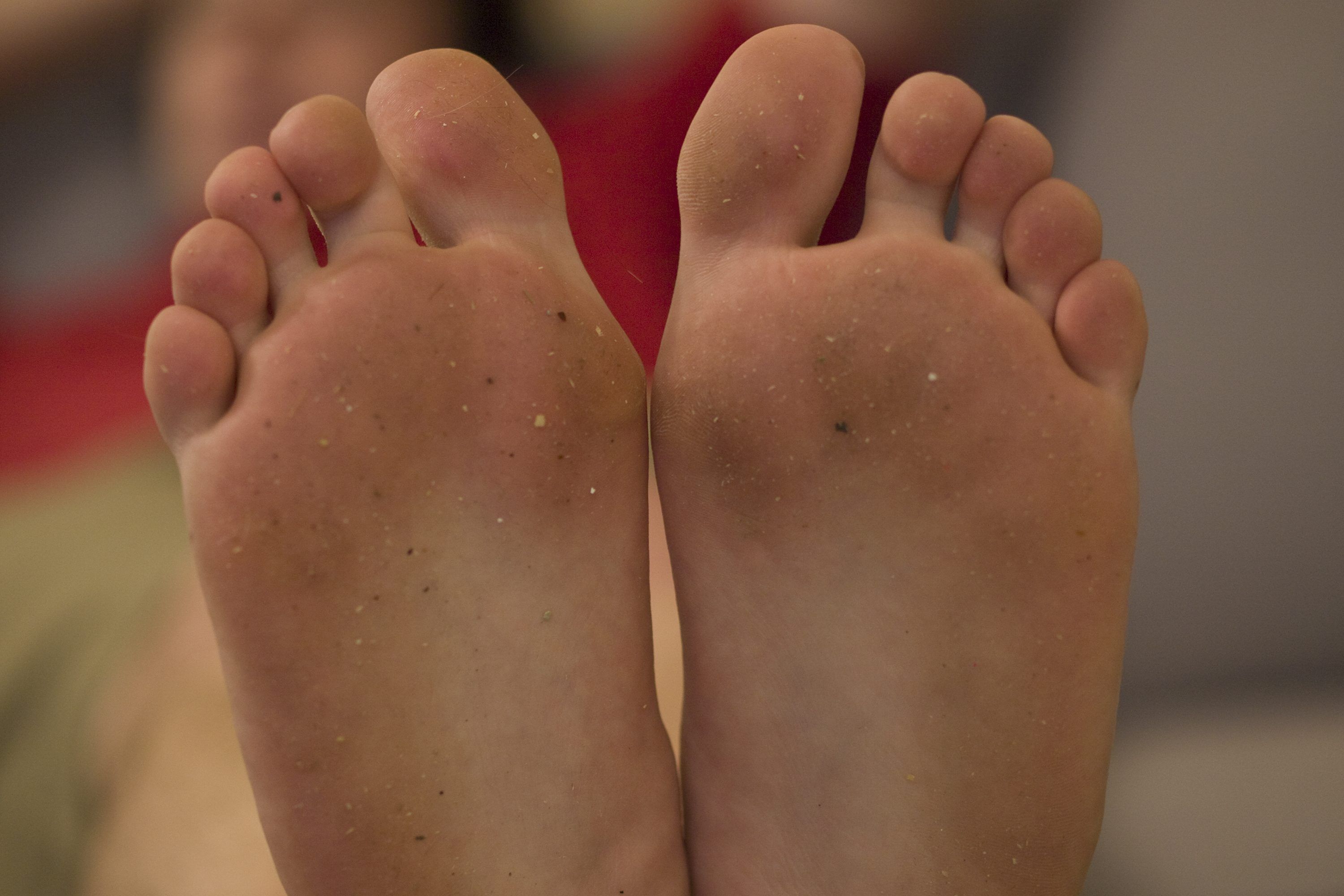 We also cover how people can tell the difference between psoriasis on the feet and athlete’s foot and offer lifestyle tips for reducing psoriasis flare-ups.
We also cover how people can tell the difference between psoriasis on the feet and athlete’s foot and offer lifestyle tips for reducing psoriasis flare-ups.
There are several types of psoriasis. The most common type is plaque psoriasis, which occurs in around 90% of people with the condition.
Plaque psoriasis can occur on almost any part of the body, including the feet. This type causes dry patches of skin known as plaques.
Psoriasis may present differently on light and dark skin. For example, psoriasis often appears red or pink on light skin but may cause violet, gray, or dark brown patches on darker skin.
These plaques are usually covered in silvery scales and can be itchy and sore. In more severe psoriasis, plaques may also crack open and bleed.
The second type of psoriasis, called palmoplantar pustular psoriasis, specifically affects the palms of the hands and the soles of the feet.
People with palmoplantar pustular psoriasis typically notice many tiny, pus-filled blisters on their feet, hands, or both. Despite their appearance, these blisters are not infectious or contagious.
Despite their appearance, these blisters are not infectious or contagious.
When a person has psoriasis, a rare acute condition can develop on their feet. Doctors call it erythrodermic psoriasis.
Erythrodermic psoriasis is an acute condition and causes inflammation on over 90% of the body’s surface, making it appear erythematous and inflamed. This means the affected skin becomes red, which may appear a deeper red or dusky color on darker skin.
Other than psoriasis, other triggers for this condition include other inflammatory skin conditions, certain cancers and some drugs.
Erythrodermic psoriasis is serious and requires immediate medical attention.
Psoriasis develops when the body replaces skin cells too fast. Doctors do not fully understand what causes this skin condition, but they believe it to be an autoimmune disease. This means the body’s immune system attacks healthy tissue, such as skin cells, by mistake.
A person’s genes may play a role in the development of psoriasis, and it may run in families.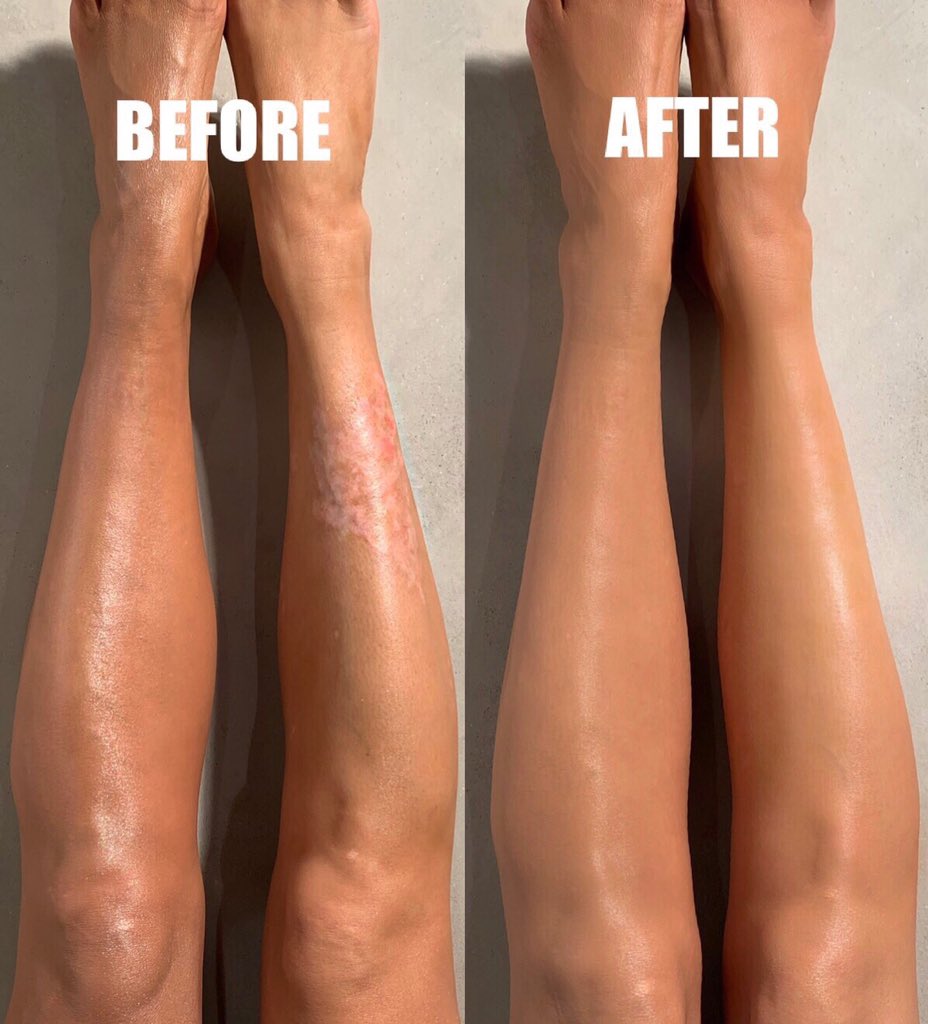 People with other autoimmune diseases are also more likely to develop the condition.
People with other autoimmune diseases are also more likely to develop the condition.
Many people with psoriasis find that certain things trigger or worsen their symptoms. Potential triggers can vary from person to person, but may include:
- a recent injury to the skin, such as a cut, insect bite, or sunburn
- emotional stress
- weather changes, especially when they cause skin dryness
- an illness or infection
- certain medications
Some people first notice psoriasis after they have experienced a trigger. If the condition affects the feet, a person may mistake their foot symptoms for an allergic reaction or an infection, such as athlete’s foot.
Share on PinterestPsoriasis and athlete’s foot can look similar. However, athlete’s foot is a contagious condition.
Rattana/Shutterstock
Athlete’s foot is a common fungal infection that occurs on the feet. Unlike psoriasis, it is contagious.
A person can get athlete’s foot from surfaces, towels, and clothes carrying the fungus.
In most cases, the condition requires treatment. However, a person can usually treat the infection at home with over-the-counter antifungal medications.
Psoriasis on the feet and athlete’s foot can look similar. A person may need to consult a doctor if they are unsure which condition they have, particularly if they have not had psoriasis before.
Some differences between athlete’s foot and psoriasis might include:
- Location: Though both conditions can affect any part of the foot, athlete’s foot can appear between the toes or under the nails. Psoriasis can also affect the nails and the soles of the feet.
- Color: Psoriasis and athlete’s foot can both look scaly and red in people with light skin. On darker skin, these may also appear gray, purple, or dark brown. Psoriasis also tends to change color and appearance over time or develop overlying silvery scales.
- Pain: Psoriasis on the foot can feel sore and painful.
 Athlete’s foot is mainly itchy, but frequent scratching can cause the infection to hurt.
Athlete’s foot is mainly itchy, but frequent scratching can cause the infection to hurt. - Nail changes: Athlete’s foot can trigger an infection in the area under the nails. It can cause the nails to lift and look yellow and brittle. Psoriasis can also cause the nails to look dented.
- Joint stiffness: Some people with psoriasis have achy, stiff joints and other symptoms.
As yet, there is no cure for psoriasis, but a range of treatments can help relieve symptoms and reduce flare-ups. The choice of treatment will often depend on the type, location, and severity of a person’s psoriasis.
The three primary treatments include topical medications, light therapy, and systemic drugs.
Topical medications come in the form of different topical formulations, such as creams and ointments, that people apply directly to their skin. Examples include:
- emollients
- steroids
- vitamin D analogs
- calcineurin inhibitors
- coal tar
A person can buy some topical treatments, such as emollients, mild steroids creams, and coal tar foams, over the counter.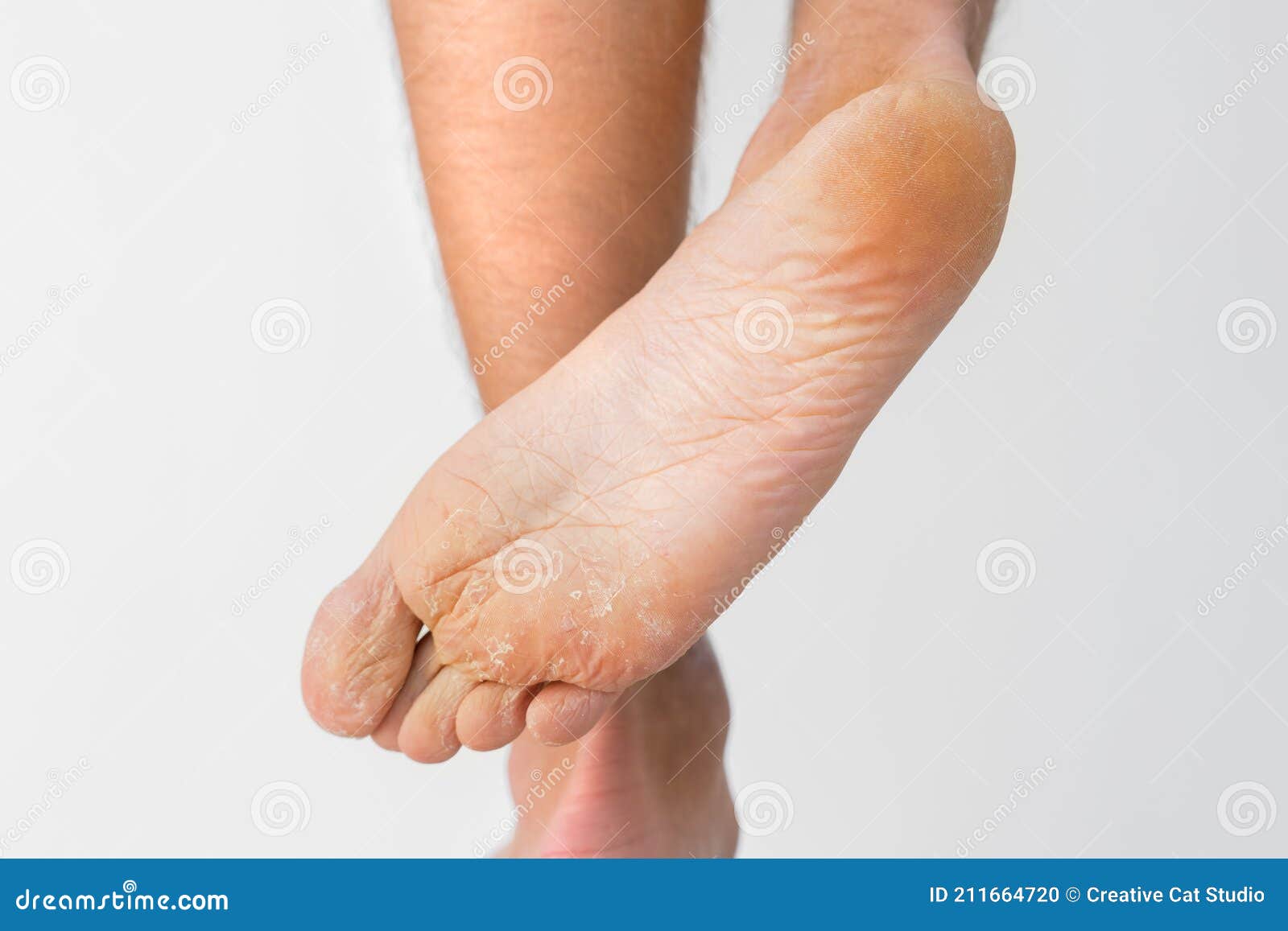 A doctor can prescribe stronger topical formulations.
A doctor can prescribe stronger topical formulations.
Light therapy, also known as phototherapy, usually takes place in hospitals or clinics and involves doctors exposing a person to UV light. For light therapy to be effective, people may require 2 or 3 sessions a week.
Systemic treatments work throughout the body and include oral and injected drugs. Doctors typically only prescribe these medications for severe psoriasis due to the risk of serious side effects and the need for close monitoring.
Examples of systemic treatments include:
- immunosuppressants, such as methotrexate or cyclosporine
- steroids
- retinoids
- phosphodiesterase 4 inhibitors
- biologics
Treating psoriasis on the feet can be challenging due to its location. Working with a doctor, people may need to try several different treatments before finding one that is effective. In some cases, an individual may require a combination of treatments.
A doctor may recommend coal tar, light therapy, or systemic drugs for people with psoriasis on the feet that they find difficult to treat in other ways.
Current guidelines suggest prescribing a biologic drug, such as infliximab (Remicade) or adalimumab (Humira), among others, for palmoplantar psoriasis. These drugs affect how the immune system works and aim to treat the underlying cause of psoriasis.
Some lifestyle changes may help reduce or prevent flare-ups of psoriasis. These may include:
- staying healthy, such as by maintaining a moderate weight, avoiding smoking if applicable, reducing alcohol intake, and eating a balanced diet
- keeping the skin moisturized, such as by regularly using emollients and avoiding soaps and cosmetics that can dry the skin
- using a symptoms diary to identify and avoid specific psoriasis triggers, such as certain foods and weather
- minimizing stress, such as through meditation, yoga, therapy, or other strategies
- exercising regularly
Here are a few common questions about psoriasis on the feet.
How do you get rid of psoriasis on your feet?
Treatment for psoriasis on the feet may involve a combination of topical medications, light therapy, and systemic drugs, such as immunosuppressants. Several lifestyle changes can also help prevent flare-ups of psoriasis over the long term.
Several lifestyle changes can also help prevent flare-ups of psoriasis over the long term.
A person can work with a doctor to determine the best course of treatment for them, which may depend on the specific type, location, and severity of psoriasis.
What does psoriasis on feet feel like?
Plaque psoriasis can cause dry patches of skin on the feet, which often feel itchy or sore. Other types of the condition may cause painful, pus-filled blisters on the soles of the feet or scaly, dry patches of skin throughout the body.
Why am I getting psoriasis on my feet?
While exactly what causes psoriasis on the feet is unclear, certain triggers may worsen psoriasis for some people.
Potential triggers may include stress, changes in the weather, illness or infection, certain medications, or a recent injury to the skin.
Psoriasis on the feet can be painful and more challenging to treat than the condition developing on other parts of the body. There are many treatment options available, but a person may need to work with their doctor to find one that is effective for them.
Keeping the skin moisturized, avoiding potential triggers, and maintaining a healthy lifestyle may also help prevent psoriasis flare-ups.
Read this article in Spanish.
Psoriasis on the legs: causes, stages (photo), treatment
Author of the article
Razheva Valentina
Pediatrician,
member of the Union of Pediatricians of Russia
Psoriasis on legs
Last updated: 01/12/2023
Contents of the article
- Initial stage of psoriasis on the legs
- Symptoms of psoriasis on the legs
- Treatment of psoriasis on the legs
The appearance of psoriasis on the legs gives a person significant physical and emotional discomfort. The presence of deep painful cracks on the feet, the formation of psoriatic plaques on the knees, increased dryness and thickening of the skin – all this interferes with the patient, worsening his quality of life. The difficulty lies in the fact that it is almost impossible to completely cure psoriasis on the legs. However, there are ways to maximize the duration of remissions and reduce the manifestations of the disease.
However, there are ways to maximize the duration of remissions and reduce the manifestations of the disease.
Psoriasis on legs: initial stage
The initial stage of the disease is represented by the appearance on the surface of the skin of small areas of a rash – dry reddish papules with a loose structure. As psoriasis progresses, their area grows, so over time, the rashes merge into large plaques.
The first symptoms of psoriasis on the legs can be mistaken for manifestations of other skin diseases. The so-called psoriatic triad helps not to confuse this disease with others – a set of signs characteristic of psoriasis at the initial stage:
- Stearin stain. With a slight scraping of the rashes, an increase in peeling is observed, giving the surface of the rash a resemblance to a crushed drop of stearin.
- Terminal film. Under the layer of scales is a layer of shiny red skin.
- “Blood dew”. At the slightest injury to the terminal film, small drops of blood appear on its surface, resembling dew.

It should be remembered that in infants, as well as in the intertriginous form of psoriasis in children, the phenomena of the psoriatic triad may not be determined.
Symptoms of psoriasis on the legs
Depending on the type of disease, the signs of psoriasis on the legs may vary.
Ordinary psoriasis on the legs
Ordinary (vulgar, simple, plaque-like) psoriasis is characterized by the formation of so-called psoriatic plaques – rounded islands, slightly rising above areas of healthy skin. Their surface is covered with dry scales of gray, silver or white, which are easily separated in case of scraping. The surrounding skin usually turns red, its temperature rises slightly, and the plaques themselves are accompanied by severe itching. As the number of eruptions grows, they can merge, forming the so-called “paraffin lakes”. Most often, psoriasis vulgaris on the legs appears in places subject to strong friction – these can be the feet, the outer surface of the knees, and the shins.
Pustular and exudative forms
Pustular and exudative forms of psoriasis are characterized by the appearance of vesicles on the affected areas of the skin, inside of which there is exudate. The skin around the rash is hot to the touch and red, the patient experiences itching, because of which he can scratch the rash. Due to the violation of the integrity of the blisters, the disease can be complicated by the addition of an infection and subsequent suppuration. If we talk about pustular and exudative psoriasis on the legs, then most often the disease is localized in the lower legs.
Psoriatic erythroderma
Symptoms of psoriatic erythroderma are represented by red rashes localized on large areas of the skin, severe itching, in some cases – detachment of the affected skin, swelling of the subcutaneous tissue, swollen lymph nodes. If we talk about the legs, then the rash can affect them completely – from the groin and buttocks to the ankles.
Foot psoriasis localization
Foot psoriasis
Special attention deserves the defeat of the feet. Psoriasis on the soles of the feet gives a person great psychological discomfort: the patient is embarrassed to walk in open shoes or barefoot, which can adversely affect his social adaptation and personal life. In addition, with psoriasis, painful wounds and cracks form on the feet, which interfere with a person walking.
Psoriasis on the soles of the feet gives a person great psychological discomfort: the patient is embarrassed to walk in open shoes or barefoot, which can adversely affect his social adaptation and personal life. In addition, with psoriasis, painful wounds and cracks form on the feet, which interfere with a person walking.
Skin lesions in psoriasis are localized on the heels, fingertips, around the nails, between the toes, on the top of the foot. It can be small or deep cracks, psoriatic plaques, fluid-filled blisters.
The danger of foot psoriasis is that the rashes are constantly exposed to friction due to wearing socks, tights and shoes. Irritation caused by friction leads to increased itching and scratching of the affected skin – this can lead to infection or fungus.
In addition, the course of psoriasis on the soles of the feet is aggravated by sweating. By itself, sweat may not be dangerous for psoriatic rashes. However, it is a favorable environment for the reproduction and vital activity of bacteria, which can cause complications in the form of inflammation.
Joint psoriasis (psoriatic arthritis)
Psoriasis of the legs can affect not only the skin, but also the joints – in such cases we are talking about psoriatic arthritis. In particular, the knees and joints of the toes can suffer from this form of the disease. Usually, psoriatic arthritis does not appear in early childhood, affecting mainly adolescents, adults and the elderly.
Joint damage can develop simultaneously with psoriatic skin rashes or precede them (in 50% of cases).
The main symptom of psoriatic arthritis in the legs is the deformity of the joints and an increase in their size. Due to a violation of the shape of the joint, a change in the shape of the limb occurs – for example, a bone may appear at the base of the thumb. Due to the articular deformity, the patient feels stiffness and soreness, which manifests itself mainly in the morning. The skin over the affected joint stretches and acquires a painful burgundy hue. Edema may also be observed.
Psoriatic arthritis can have a negative impact not only on the joints, but also on ligaments, tendons and bone tissue. For example, the lesion may be localized to the calcaneus and tibia.
Damage to the nails
Damage to the toenails with psoriasis is not uncommon. This form of the disease manifests itself in the form of a change in the color and structure of the nail plates: they usually thicken, acquire a yellowish, gray or white tint, easily break, crumble and exfoliate, or vice versa – they become very thick. Also, depressions and grooves appear on the nails, and the skin around them becomes denser. Small hemorrhages and inflammatory processes can be observed under the nail plate. If you do not deal with the treatment of nail psoriasis on the legs, there is a possibility of complete loss of the damaged nail.
How to treat psoriasis on the legs?
All people who are faced with this disease are interested in how to cure psoriasis on the legs. Unfortunately, it is not possible to completely get rid of it – but the patient can make every effort to reduce the manifestations of psoriasis and prolong the periods of remission.
Unfortunately, it is not possible to completely get rid of it – but the patient can make every effort to reduce the manifestations of psoriasis and prolong the periods of remission.
Treatment of psoriasis on the feet, shins, calves and thighs should be comprehensive – only in this case can noticeable results be achieved. If you act solely on the external manifestations of the disease, the effect of such therapy will be short-lived.
Preparations
The appointment of drugs for the treatment of psoriasis on the legs should be handled by a dermatologist, since medications arbitrarily chosen by the patient himself can harm him. Hormonal ointments, gels and creams are used to reduce skin itching, peeling and inflammation in psoriasis on the legs. In addition to them, the doctor may prescribe non-hormonal external agents based on tar, salicylic and boric acids, zinc. As for taking medications orally, depending on the form of manifestation of psoriasis, sedatives, antihistamines, multivitamin complexes, retinoids, and cytostatics can be prescribed.
Physiotherapy
Physiotherapy plays an important role in the treatment of psoriasis on the legs. This can be selective phototherapy, PUVA therapy, X-ray therapy, ultrasound therapy, magnetotherapy, cryotherapy, diadynamic therapy, laser treatment, baths with sea salt, soda, herbal decoctions.
Traditional medicine
Traditional medicine recommends using vegetable oils as an additional remedy in the treatment of psoriasis on the legs – olive, sea buckthorn, burdock, linseed. Thanks to a balanced composition rich in useful substances, oils provide additional nutrition and softening to the affected skin, fight inflammation, and accelerate the process of skin regeneration.
The use of traditional medicine is possible only after consulting a doctor.
To reduce the signs of psoriasis on the legs and prevent the development of exacerbations, the patient is recommended to follow some rules:
- Wear comfortable, not too tight, light shoes without heels.
 It is also recommended to use special insoles that provide maximum cushioning.
It is also recommended to use special insoles that provide maximum cushioning. - Pants and skirts should be spacious enough, made of soft materials that are pleasant to the touch.
- It is necessary to treat any inflammatory processes on the legs in a timely manner.
- During the period of exacerbation of psoriasis, it is recommended to reduce the load on the legs to protect them from friction.
With psoriasis on the legs, it is extremely important to provide quality care to the affected areas of the skin. For this purpose, La Cree products are well suited:
- It is better to replace daily hygiene procedures with the use of soap with the use of a more gentle product – La Cree cleansing gel. It contains hypoallergenic detergents, avocado and olive oil derivatives, licorice and walnut extracts – these components provide gentle skin cleansing, have anti-inflammatory and healing effects.
- For additional hydration and nourishment of the affected areas, you can use the La Cree cream for dry skin.
 It contains wheat germ, jojoba and shea oils, beeswax, licorice and string extracts, the action of which is aimed at combating itching and flaking of the skin.
It contains wheat germ, jojoba and shea oils, beeswax, licorice and string extracts, the action of which is aimed at combating itching and flaking of the skin.
Clinical studies
Conducted clinical studies prove the high efficiency, safety and tolerability of TM “La Cree” products for daily skin care of children with mild and moderate atopic dermatitis and during remission, accompanied by a decrease in the quality of life of patients. As a result of therapy, a decrease in the activity of the inflammatory process, a decrease in dryness, itching and flaking were noted.
Many products of the line are recommended by the St. Petersburg branch of the Union of Pediatricians of Russia.
Sources:
- Sukolin Gennady Ivanovich, Clinical dermatology. Brief guide to the diagnosis and treatment of dermatosis, Notabene, 2017.
- Reken Martin, Schaller Martin, Sattler Elke, Burgdorf Walter, Atlas of Dermatology, MEDpress-inform, 2018.

- Schneiderman Paul, Grossman Mark, Differential diagnosis in dermatology. Atlas, Binom, 2017.
Photos of neurodermatitis in adults
Neurodermatitis in adults on the body
Neurodermatitis in adults on the neck
Neurodermatitis in adults on the hands
Symptoms of neurodermatitis in adults
Neurodermatitis in adults on the head
Neurodermatitis in adults on the palms
Neurodermatitis in adults on the elbows
Neurodermatitis on fingers in adults
Neurodermatitis in adults on the legs
Signs of neurodermatitis in adults
Photo album on the disease
See also
Palmar and plantar psoriasis
Palmar and plantar psoriasis is a dermatological disease that presents with skin lesions in the palms, fingers, hands, soles and arches of the feet.
More
Psoriasis of the palms
Psoriatic rashes can be localized on almost all parts of the body, including the hands.
More
Psoriasis on the elbows
Psoriasis affects the skin on any part of the body. Often it is localized on the extensor surfaces of large joints.
More
Psoriasis
Psoriasis is a non-infectious disease that affects the skin, nails and joints of a person. The disease is characterized by an undulating course with periods of exacerbations and remissions.
More
Back to article list
photos, treatment, symptoms of the initial stage, causes – Losterin
The appearance of psoriasis on the legs causes discomfort to the patient, the quality of life decreases, the emotional background worsens.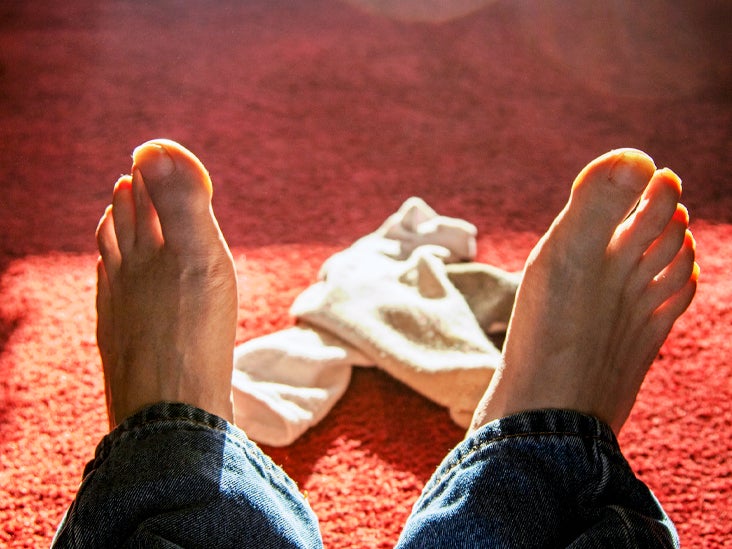 The presence of lesions prone to dryness and the appearance of deep cracks hinders movement and brings pain. To start pathogenetic therapy, it is recommended to know what psoriasis looks like on the legs in order to distinguish it from other skin diseases.
The presence of lesions prone to dryness and the appearance of deep cracks hinders movement and brings pain. To start pathogenetic therapy, it is recommended to know what psoriasis looks like on the legs in order to distinguish it from other skin diseases.
Causes of psoriasis on the legs
Psoriasis is a non-communicable disease that affects the skin and causes bright pink rashes. The elements of the rash are most often represented by separate rashes – papules, which can sometimes merge and form plaques. Statistically, psoriasis accounts for 2% of all skin diseases. Most often localized on the lower and upper limbs.
The exact cause of the development of the disease is difficult to trace, experts identify a number of etiological factors that become a trigger:
Often there is a combination of several causes, which complicates the diagnosis and prescription of causal treatment to target the trigger.
Photo of psoriasis on the legs, what psoriasis on the legs looks like
Photo 1.
Psoriasis of the feet.
Photo 2.
Psoriasis on the legs.
Photo 3.
Symptoms of psoriasis: itching.
Photo 4.
Symptoms of psoriasis: deterioration of the nails.
Picture 5.
Psoriasis on the heels.
Photo 6.
Cracks in the heels from psoriasis.
To see what psoriasis looks like on the legs, you can look at photos of rashes on medical websites. Detailed photos of psoriasis on the feet and will allow you to consider the shape, type and structural features of the psoriatic plaque.
The initial stage of psoriasis on the legs
From the photo you can see that the initial stage of psoriasis on the legs is similar to many dermatopathies, therefore it is sometimes mistaken for another disease and treated at home. The rash is represented by pale pink papules, on the surface of which there are white scales. Subjective sensations in the form of itching are uncharacteristic of psoriasis; pain can be noted in the presence of cracks.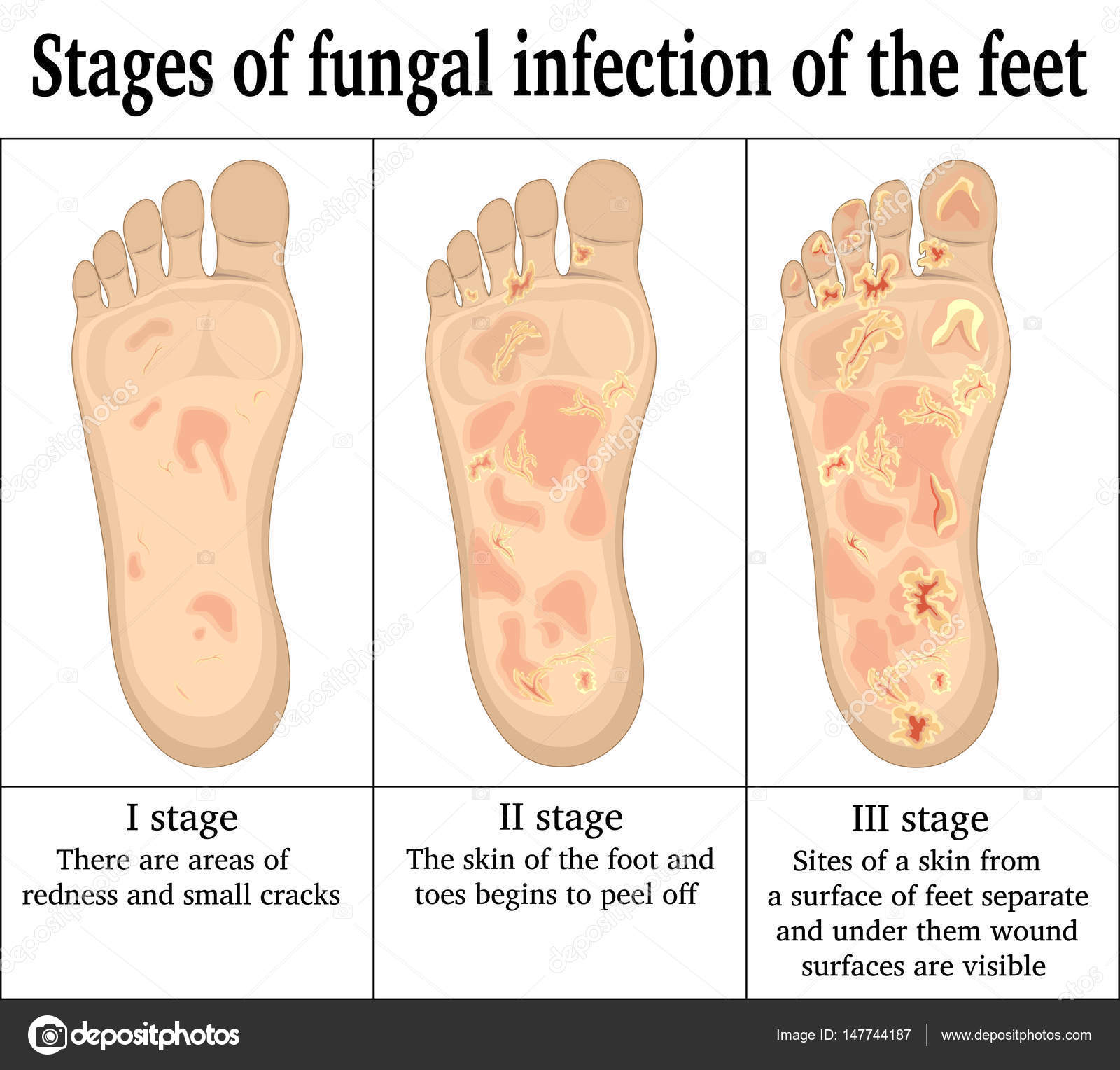
In order to differentiate psoriasis from other dermatoses, specific symptoms are checked:
In the progressive phase, the rash intensifies, becomes intensely pink, combines into plaques, partially covered with white scales with a silvery sheen. As the disease progresses, the area of the lesion grows and is completely covered with scales. Itching and burning are noted in places of close contact with clothing, cracks occur due to dryness of the epidermis.
In infants and when the rash is located in large folds of the skin (intertriginous form of psoriasis), the symptom complex is difficult to perform due to the rapid desquamation of scales.
Symptoms of psoriasis on the legs
The peculiarity of the clinical picture of psoriasis on the lower extremities depends on the location and form of the disease.
Vulgar or common psoriasis is more often located in places of close contact with clothing and frequent friction: feet, extensor surface of the knees, shins. The rashes are round or irregular in shape, prone to rapid fusion and plaque formation. Abundantly covered with white, silvery and gray scales, which are easily peeled off by rubbing and scraping. There is local hyperthermia, infiltration, itching and burning.
The rashes are round or irregular in shape, prone to rapid fusion and plaque formation. Abundantly covered with white, silvery and gray scales, which are easily peeled off by rubbing and scraping. There is local hyperthermia, infiltration, itching and burning.
Inverse psoriasis affects the flexion surfaces of the skin and areas of large folds: axillary, inguinal and intergluteal folds, elbow and popliteal folds. A complex form of the disease, similar to various types of dermatitis and allergies. Rashes are rounded, bright pink in color, a scarlet tint is possible, not covered with scales due to high humidity and active work of the sweat glands. Possible moderate itching, burning, pain. pain syndrome, severe itching and burning.
The exudative form can be located on the entire surface of the legs. On the skin, the presence of large, inflamed and weeping bright red plaques is noted. This form of psoriasis is characterized by the presence of dense scales-crusts of a yellowish-gray color on the surface of the rash.
Guttate psoriasis is manifested by multiple small reddish papules covered with silvery-white scales. With this form of psoriasis, the fusion of individual elements into plaques is rarely noted.
Psoriatic erythroderma is the most severe form, manifested by redness and infiltration of the entire human skin. There may be pronounced large-lamellar peeling. This form of psoriasis is characterized by a violation of the general condition of the patient – there is an increase in temperature, a violation of general well-being.
Psoriasis on the feet
Psoriasis on the feet brings significant psychological discomfort and limits daily activities due to the presence of pain. If psoriatic plaques are located on the back and plantar part of the foot, stiffness of movement occurs, it is difficult to find a pair of shoes.
Psoriasis on the feet is most often localized in areas of increased pressure on the skin. In these places, typical psoriatic rashes are formed, represented by infiltrated plaques of bright red color. On the surface of the plaques, there may be pronounced peeling, deep cracks.
On the surface of the plaques, there may be pronounced peeling, deep cracks.
Treatment of psoriasis on the legs
Before deciding how to treat psoriasis on the legs, it is important to exclude other skin diseases, such as a fungal infection. For this purpose, skin scrapings are most often taken for laboratory testing.
Treatment of psoriasis on the legs includes the use of drugs for external and internal use, physiotherapy, personal hygiene, diet, sleep and rest.
In severe psoriasis on the legs, systemic anti-inflammatory (immunosuppressive and cytostatic) drugs or drugs that affect the rate of cell division (synthetic retinoids) are used. Additionally or in milder cases, vitamin therapy, hepatoprotectors may be prescribed.
External treatment for psoriasis on the legs includes the use of drugs (hormonal preparations are most often used in combination with salicylic acid or a vitamin D analogue) and care products based on salicylic acid, urea, tar, naftalan oil.
Losterin in the treatment of psoriasis on the legs
The line of non-hormonal drugs Losterin is specially designed for the complex therapy of chronic skin diseases and care for damaged skin. Preparations are suitable for daily long-term use. Active ingredients: deresined naftalan, urea (urea), salicylic acid, D-panthenol, Japanese Sophora extract and almond oil do not cause addiction and “withdrawal syndrome”.
Carefully selected ingredients act directly on the lesions to reduce inflammation and itching. For the purpose of complex treatment and preventive measures for exacerbation of psoriasis on the legs and feet, the following are used: foot cream, thick emulsion and Losterin shower gel. The funds can be used during remission and as part of combination therapy.
Treatment can be supplemented with physiotherapy. The greatest therapeutic effect is observed from phototherapy (PUVA therapy. UVB-311 nm). This method significantly reduces inflammation within the focus, reduces the need for drugs and prevents the recurrence of the disease.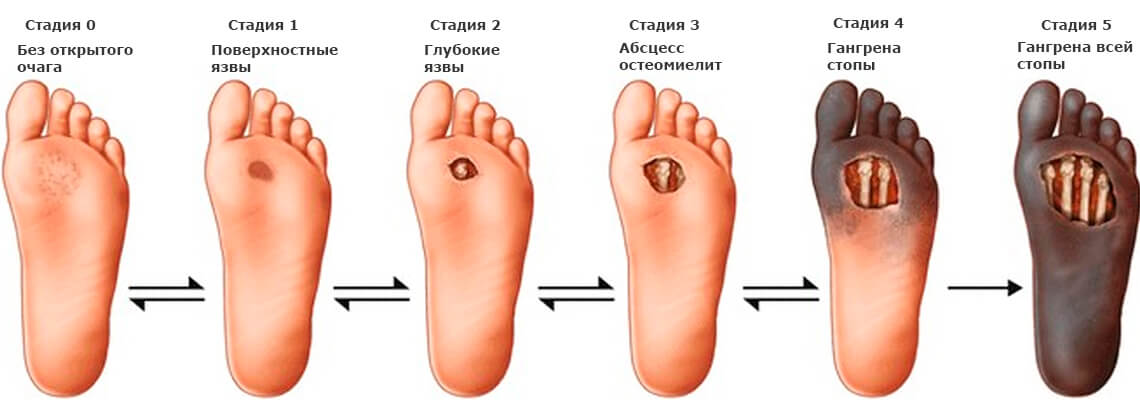
Sanatorium-and-spa treatment with hydrogen sulfide and sulfur sources in the period of regression and stationary form. The selection of an effective remedy for psoriasis on the legs is carried out by the attending specialist, it is important to have a complex effect on the body.
Prevention of psoriasis on the legs
Preventive measures include taking measures to prevent the recurrence of the disease:
- Wearing clothes made of natural light material. Underwear should be in size, without squeezing elastic bands.
- Selection of shoes strictly according to size. Wearing orthopedic insoles.
- Keep the lesions clean and dry, air baths.
- After bathing, pat skin dry with a clean, soft towel.
- Cut nails regularly, inspect daily.
- Antiseptic foot treatment: Furacilin solution, Chlorhexidine.
- Application of moisturizing and wound healing agents.
- Avoid stressful situations.
- Weight normalization.


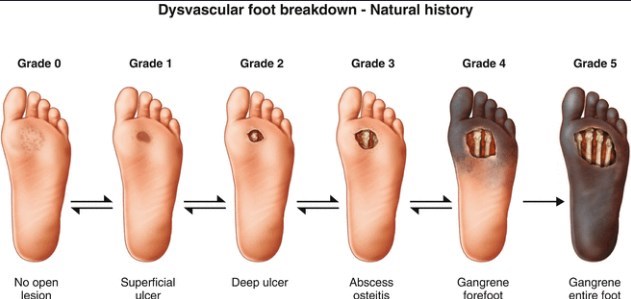
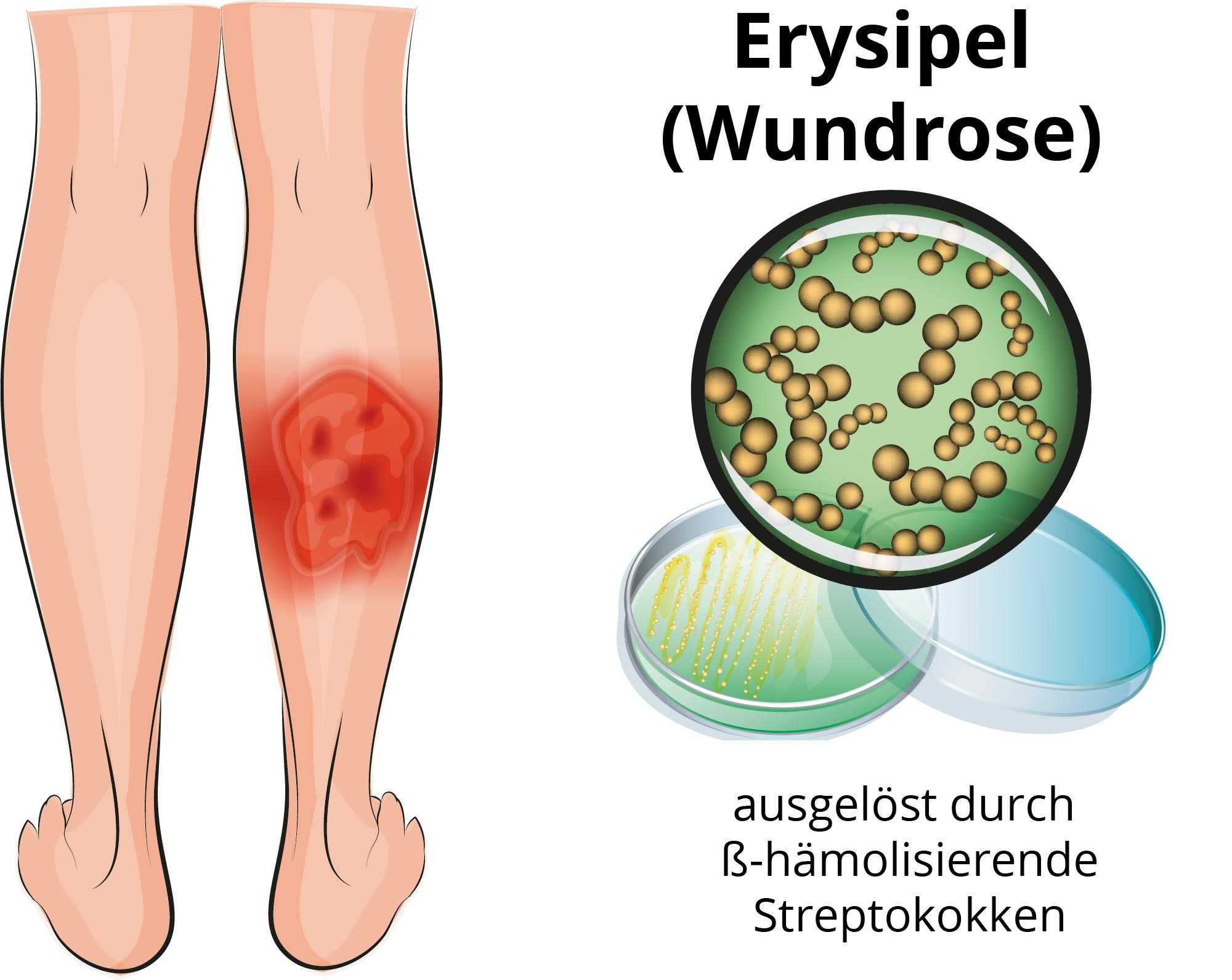 Athlete’s foot is mainly itchy, but frequent scratching can cause the infection to hurt.
Athlete’s foot is mainly itchy, but frequent scratching can cause the infection to hurt.
:max_bytes(150000):strip_icc()/common-causes-of-foot-and-ankle-swelling-1337777_final-b2d7802a1c594b9f8cbea3301755a4ef.png) It is also recommended to use special insoles that provide maximum cushioning.
It is also recommended to use special insoles that provide maximum cushioning. It contains wheat germ, jojoba and shea oils, beeswax, licorice and string extracts, the action of which is aimed at combating itching and flaking of the skin.
It contains wheat germ, jojoba and shea oils, beeswax, licorice and string extracts, the action of which is aimed at combating itching and flaking of the skin.
